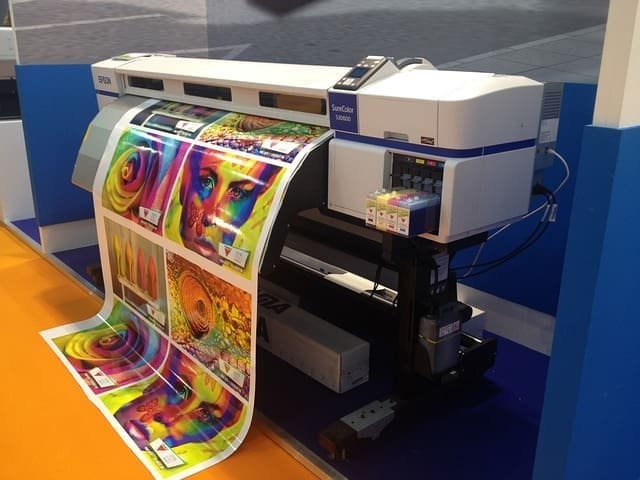With the recent advances in technology, there are now more options for printing. One of the most popular and versatile printing methods is DTF or Direct to Fabric. This method offers a wide range of benefits for businesses and consumers.

What is DTF Technology?
DTF (Direct to Fabric) technology is a digital printing method that directly transfers ink or dye onto a fabric substrate using PET film rolls. The method of printing is becoming increasingly popular in the fashion industry, as it provides designers with a unique way to create custom designs in short runs, quickly and cost-effectively. Let’s look at how this innovative printing technique works.
How Does DTF Technology Work?

DTF technology requires PET film as it utilizes specialized digital printers designed to apply ink onto fabric substrates directly. The DTF printing process starts with the designer creating the design using vector graphics software. The design is then sent to the printer, which prints it directly onto the fabric using tiny droplets sprayed on in rapid succession. The result is an incredibly accurate representation of the original artwork.
What Are the Benefits of DTF Technology?
One of the main advantages of DTF technology is its speed—it can produce high-quality prints within a shorter time than traditional screen-printing methods.
Additionally, since there are no screens or plates to prepare, DTF printing is relatively inexpensive compared to other techniques. Furthermore, since designs are printed on demand, designers can save money on producing large batches that may sell poorly or having excess inventory sitting around storage, taking up valuable space and resources.
As a result, DTF technology helps designers stay agile and responsive to customer needs and trends while keeping costs low.
DTF (Direct to Fabric) technology has revolutionized digital textile printing by offering an efficient and cost-effective alternative to traditional screen-printing methods. With its ability to produce high-quality prints quickly and with minimal setup costs, this innovative technique has become an invaluable tool for fashion designers looking for new ways to bring their creative visions to life quickly and affordably.
If you need a way to create unique designs or small batch runs efficiently, then DTF technology might be right for you.
Let’s now discuss the five facts you need to know about DTF technology to decide which printing method to use.
5 Facts You Need To Know About DTF Technology
-
Quality Equipment Is Necessary
The quality of DTF prints depends on the equipment being used. A reliable printer is essential for accurate prints with clear colors and sharp lines.
Invest in a reliable machine that can handle large-format prints. Cheap printers won’t give you the results that professional-grade machines display. Therefore, it pays to invest in good equipment if you plan to do many digital transfers.
To get the best results from DTF printing, use quality materials. That includes both the printer and the fabric itself. Cheap or lower-quality fabric will produce different results than higher-quality fabric.
-
Not All PET Films Will Cut It

When it comes to digital transfers, not all PET film rolls are created equal. Some films have better adhesion than others, while some may be prone to cracking or peeling over time.
Research which kinds of PET film rolls are best suited for digital transfer printing—it could save you from redoing a print job due to poor adhesion or fading colors over time.
When choosing a film for your DTF project, it is crucial to make it of PET material. Not all films are created equal, and using a non-PET film will likely result in inferior results.
-
Choose an Adhesive Wisely
Adhesives play an essential role in DTF printing—they keep the print from cracking or peeling over time.
Consider using an adhesive compatible with your chosen material and the type of ink to last for more than 45 washing sessions. You have the power to ensure that your prints last for a long time without fading or deteriorating prematurely.
Many adhesives are on the market, but not all are created equal. Make sure to choose an adhesive designed for DTF technology to get the best results.
-
Fabric Doesn’t Need Pre-Treatment with DTF Technology

One great thing about DTF printing technology is that fabric doesn’t require pre-treatment before it can be printed. That differs from other printing techniques, such as screen printing or heat transfers, where fabrics must be treated with special chemicals before ink application.
As a result, DTF technology is more versatile, allowing businesses and entrepreneurs to easily create custom prints on all materials without extra steps beforehand.
-
DTF Printing Offers Greater Versatility
One of the main reasons businesses choose DTF printing is its versatility. This type of printing can be used on various fabrics, including cotton, polyester, and even some types of leather.
Additionally, DTF printing creates a wide variety of products, including shirts, hats, bags, and more. If you’re looking for a high-quality printing method that saves time and money, then DTF printing is worth considering.
Wrap Up
DTF technology has revolutionized the world of printing by making custom prints accessible and affordable. By understanding these five critical facts about digital transfer films, you can ensure that your prints look the best. Whether you’re looking for short runs or large format jobs, DTF technology and quality PET film rolls provide what you need at an unbeatable price point.
